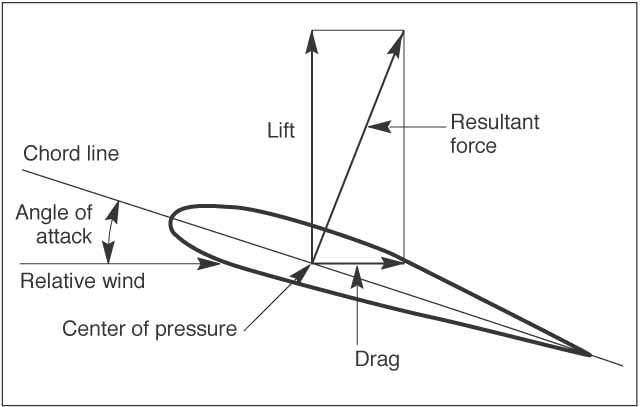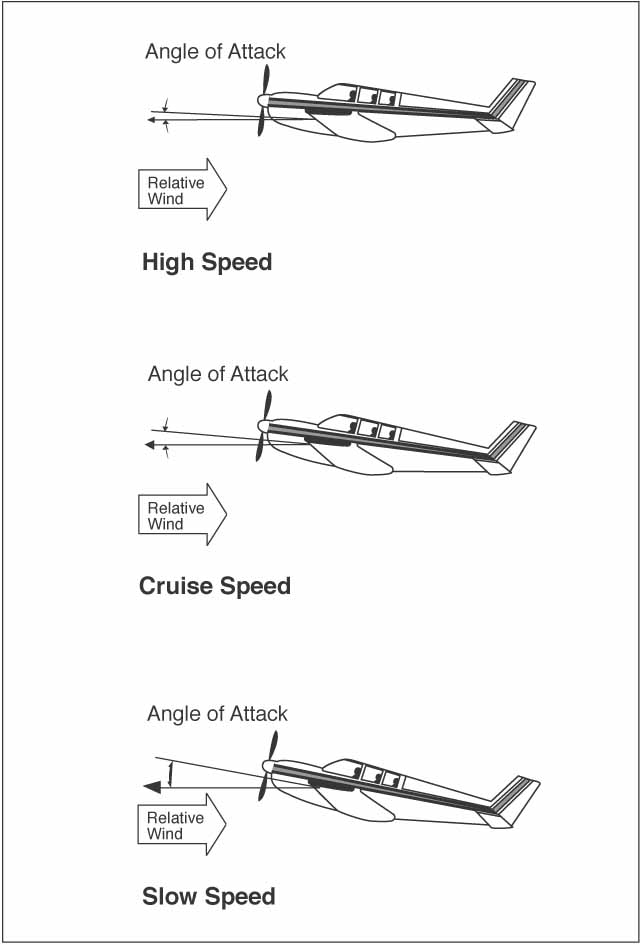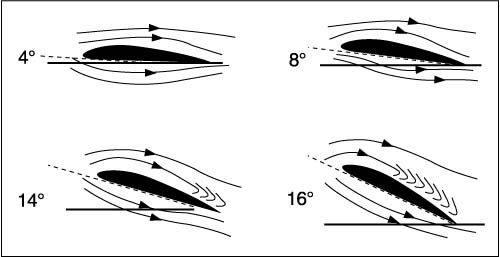Monday’s post contained an excerpt from the Pilot’s Handbook of Aeronautical Knowledge discussing newly outlined content in regards to Angle of Attack indicators. What I hope you were able to gain from reading the earlier post was the correlation between Angle of Attack and a stall. The Dictionary of Aeronautical Terms defines angle of attack as the acute angle formed between the chord line of an airfoil and the direction of the air that strikes the airfoil. The image below will help you to visualize this.


As the angle of attack is increased (to increase lift), the air will no longer flow smoothly over the upper wing surface but instead will become turbulent or “burble” near the trailing edge. A further increase in the angle of attack will cause the turbulent area to expand forward. At an angle of attack of approximately 18° to 20° (for most wings in training aircraft), turbulence over the upper wing surface decreases lift so drastically that flight cannot be sustained and the wing stalls. This angle is known as the critical angle of attack and is better defined in the Dictionary of Aeronautical Terms as the highest angle of attack at which air passes over an airfoil in a smooth flow. At angles of attack greater than the critical angle, the air burbles, or flows in a disturbed pattern, and lift is lost. The critical angle of attack is sometimes called the stalling angle of attack.

An airplane can stall at any airspeed or any attitude, but will always stall at the same critical angle of attack. The indicated airspeed at which a given airplane will stall in a particular configuration, however, will remain the same regardless of altitude. Because air density decreases with an increase in altitude, the airplane has to be flown faster at higher altitudes to cause the same pressure difference between pitot impact pressure and static pressure.
An additional term you may hear as you progress through the more advanced stages of training is the lift coefficient. This is a dimensionless number used to solve a lift equation. For an aircraft to maintain level flight it must counteract weight and maintain lift. Based on factors like weight, wing area, and speed you can use the lift equation to solve for the lift coefficient. Without actually doing the math and getting too deep into this stuff let’s say a 2,300 lb. aircraft with a 160 sq. ft. wing area is cruising along at 80 knots. Using these values I can solve the lift equation to determine a lift coefficient of 0.60. Looking at the chart below I can determine the wing will be required to maintain an angle of attack of approximately 2° for level flight. Now let’s say everything remains the same except I pull the throttle back and slow to 60 knots. Again plugging in all the same values but now with a velocity of 60 knots I can determine a lift coefficient of 1.0. You can see from looking at the chart my angle of attack has tripled to 6°. As I continue to slow, this angle with become greater and greater. The angle at which I reach my maximum lift coefficient is also known as my critical angle of attack, the point at which the aircraft will begin to stall. This is shown on the chart by a downward curve; weight has now become greater than lift.

I want to point out again though that no matter the speed, weight, or even center of gravity of the aircraft the wing will always stall at the same critical angle of attack. There will always be that specific angle at which the wing is no longer able to produce lift due to the turbulent flow of air over the upper chamber of the wing. To learn more about the lift coefficient and other aerodynamic principals I recommend you pick up a copy of Aerodynamics for Aviators.




